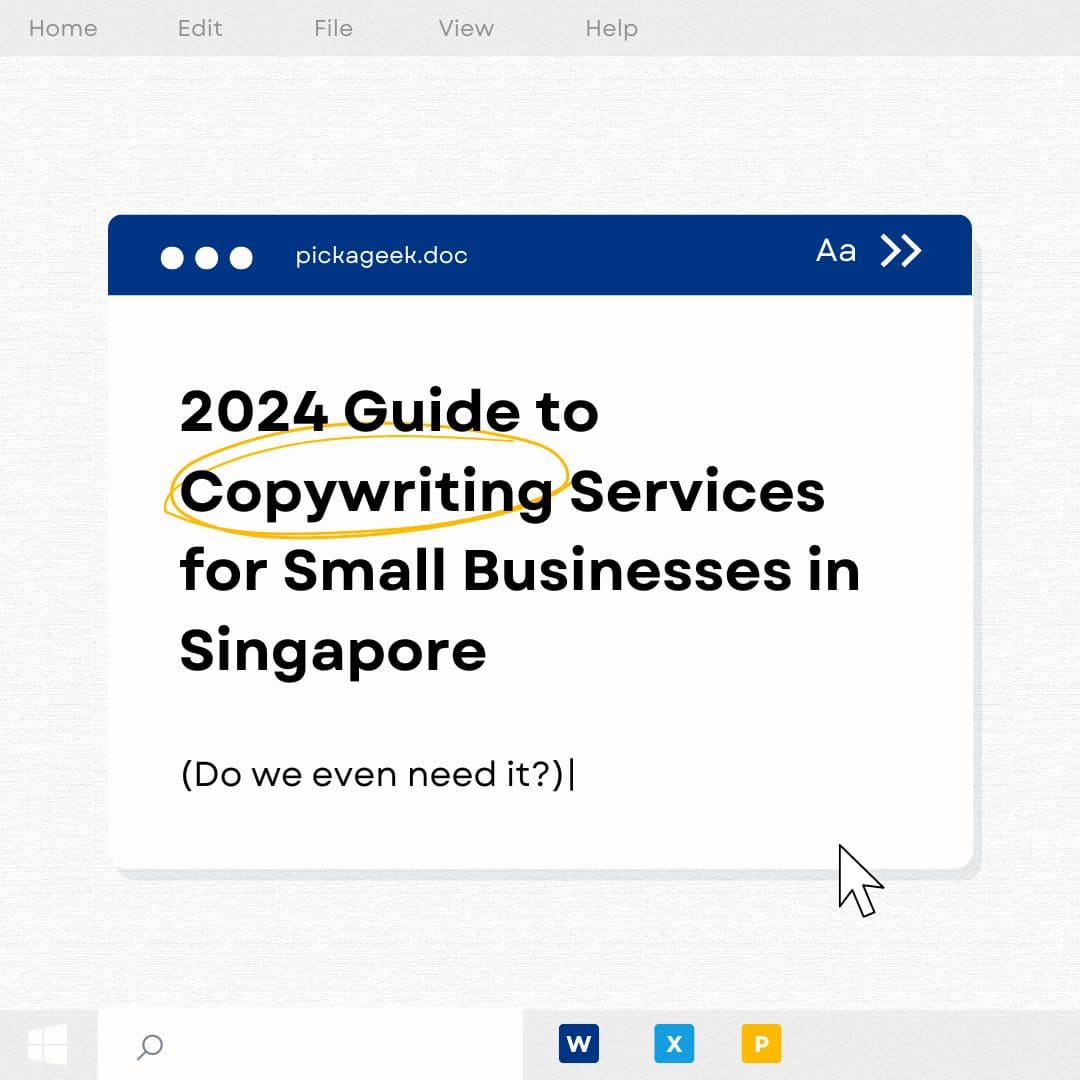What is the Google Sandbox? The term "Google Sandbox" refers to a speculated phase where…

How Ray Dalio’s 5-Step Framework Can Help Singaporean Startups Achieve Success
Ray Dalio, a renowned entrepreneur, investor, and author, has significantly impacted finance and business through his book “Principles.” In it, he outlines a 5-Step Framework that is particularly useful for startups. This method provides a structured approach to tackle challenges and achieve goals. By adopting Dalio’s strategies, startup founders and their teams can enhance decision-making and strategic planning. These steps are crucial for success in the competitive environment of business, making Dalio’s framework a valuable tool for emerging companies.
What is Ray Dalio’s 5-Step Framework?

Ray Dalio’s 5-Step Framework is a practical tool for startups aiming to navigate the complexities of the business world and the Singaporean market efficiently. Here’s a brief explanation of each step and its relevance to startup development.
- Goals: Set clear objectives. For startups, establishing concrete goals is crucial as it directs all subsequent efforts and resources. It helps maintain focus on what is essential for growth and success.
- Problems: Identify and do not shy away from problems. In the startup phase, recognising obstacles early can prevent larger issues down the line. Addressing these problems head-on is vital for continuous improvement and innovation.
- Diagnosis: Analyse the root causes of the identified problems. This step is critical for startups as it prevents the recurrence of the same issues. Understanding why a problem occurs allows for more effective solutions to be crafted, ensuring long-term stability.
- Design: Develop plans to overcome the diagnosed problems. For startups, this means creating strategic, actionable steps that align with overall business goals. Designing robust strategies at this stage can significantly influence the likelihood of achieving success.
- Execution: Implement the designs effectively. Execution is where theories and plans are put into practice. For startups, efficient execution means managing resources wisely, maintaining flexibility, and adjusting strategies as needed to navigate the market and achieve set goals.
Applying the Framework to Startup Success in Singapore
Applying Ray Dalio’s 5-Step Framework starts with one of the most crucial steps for any startup: setting clear and achievable goals.
Step 1 – Defining Clear and Achievable Goals

For startup founders, clear goals act as a roadmap, guiding the direction and efforts of the entire organisation. They help prioritise activities and allocate resources effectively. Moreover, well-defined goals provide a benchmark for measuring progress and success, which is vital for maintaining team motivation and investor confidence.
4 Examples of Effective Goal-Setting Strategies for Startups

- SMART Goals: Ensure that goals are Specific, Measurable, Achievable, Relevant, and Time-bound. For example, a tech startup might aim to acquire 1000 new users within the first three months post-launch by implementing a targeted digital marketing campaign.
- OKRs (Objectives and Key Results): This methodology helps startups set ambitious goals and track their outcomes with specific, quantifiable results. For instance, an objective could be to expand the market reach, with key results like increasing market share by 15% or entering two new international markets within the year.
- Vision Boards: Using visual representations of their goals can help founders and their teams visualise success and stay aligned. This could involve images and charts that depict growth targets, key markets, or the impact of the product.
- Milestone Planning: Breaking down large goals into smaller, manageable milestones can make them seem less daunting and more achievable. For example, before launching a product, a startup might set milestones for prototype development, user testing, and revisions based on feedback
Step 2: Identifying Problems

Identifying problems is a fundamental step in Ray Dalio’s 5-Step Framework and is crucial for startups aiming to innovate and differentiate themselves in the competitive Singaporean market.
Importance of Identifying Problems for Innovation and Differentiation
For startups, recognising and addressing problems early can be a significant driver of innovation. By identifying what isn’t working or what could potentially become a barrier to growth, startups can develop unique solutions that set them apart from the competition. This proactive approach to problem-solving not only enhances the product or service but also builds a culture of continuous improvement and adaptability, which are key to long-term success.
5 Methods for Identifying and Prioritising Problems

- Feedback Loops: Implementing regular feedback mechanisms from customers, employees, and stakeholders is vital. This can be achieved through surveys, user testing sessions, and open forums. Analysing this feedback helps identify recurring issues or areas needing improvement.
- Root Cause Analysis (RCA): When a problem is identified, use RCA techniques such as the “5 Whys” to drill down to the underlying cause. This helps in understanding the depth of the problem and in devising effective solutions.
- SWOT Analysis (Strengths, Weaknesses, Opportunities, Threats): This tool allows startups to not only identify internal weaknesses and external threats but also to spot opportunities for improvement and innovation. Regular SWOT analysis can help prioritise issues based on their potential impact on the business.
- Pareto Principle (80/20 Rule): Applying the Pareto Principle can help startups prioritise problems by focusing on the 20% of issues that might cause 80% of the complications. This method is effective in managing resources efficiently and tackling the most impactful problems first.
- Impact vs. Feasibility Matrix: This involves plotting problems on a matrix based on their impact on the business and the feasibility of solving them. Problems that are high-impact and relatively easier to solve should be prioritised.
Step 3: Diagnosis

Diagnosing problems within a startup is a critical component of Ray Dalio’s 5-Step Framework, focusing on understanding the underlying causes of the issues identified. This step is essential for developing effective solutions that address the root of the problem rather than just its symptoms.
5-Step Process of Diagnosing Problems and Root Causes

- Data Gathering: Collect comprehensive data related to the problem. This can include sales figures, customer satisfaction metrics, employee performance data, and operational efficiency statistics. Accurate data collection provides a factual basis for analysis.
- Data Analysis: Use statistical tools and software to analyse the data. Look for patterns, trends, and correlations that could indicate the root causes. Techniques such as regression analysis, hypothesis testing, and predictive analytics are useful in this context.
- Feedback Loops: Regularly solicit feedback from customers, employees, and other stakeholders. This feedback is invaluable as it often highlights perspectives and problems that may not be visible through data analysis alone.
- Engaging with Experts: Sometimes, the internal team might lack the necessary expertise to fully diagnose a problem. Bringing in external consultants or industry experts can provide new insights and help identify underlying issues more accurately.
- Iterative Problem Solving: Apply the insights from data and feedback to formulate hypotheses about what the root causes might be. Test these hypotheses through experiments or pilot initiatives to see if addressing them ameliorates the problem.
Value of Data Analysis, Feedback Loops, and Continuous Improvement
- Data Analysis: Provides a quantitative foundation for decisions, reducing bias and increasing the likelihood of addressing the right issues. It helps startups to quantify the impact of specific problems and to measure the effectiveness of implemented solutions.
- Feedback Loops: These are crucial for maintaining an ongoing dialogue with stakeholders and for adapting to changes in customer preferences and market conditions. Feedback loops help ensure that the startup remains aligned with its users’ needs and expectations.
- Continuous Improvement: Diagnosing problems is not a one-time task; it is an ongoing process that fosters a culture of continuous improvement. This mindset encourages constant evaluation and refinement of products, services, and processes. It leads to incremental improvements that cumulatively can have a significant impact on the startup’s success.
Step 4: Designing Solutions

This stage is essential as it sets the foundation for effective implementation and ultimately determines the success of the startup’s strategy.
5 Strategies for Designing Innovative Solutions

- Brainstorming and Ideation: Foster a creative environment where team members feel encouraged to suggest ideas without fear of criticism. Techniques like brainstorming sessions, SCAMPER (Substitute, Combine, Adapt, Modify, Put to another use, Eliminate, and Reverse), and lateral thinking can open up new possibilities for innovative solutions.
- Design Thinking: Utilise design thinking principles which focus on understanding the user experience and developing solutions that are not only functional but user-centric. This process involves stages like empathising with users, defining the problems in user terms, ideating, prototyping, and testing.
- Leveraging Technology and Data: Integrate advanced technologies such as AI, big data analytics, and IoT to design solutions that are cutting-edge and scalable. Using data effectively can also uncover trends and insights that lead to more targeted and effective solutions.
- Collaborative Design: Encourage collaboration across departments and even with external partners or stakeholders. This cross-functional collaboration brings different perspectives and expertise to the table, enhancing the innovation potential of the solutions developed.
- Prototyping and Pilots: Build prototypes or conduct pilot programs to test the solutions in real-world scenarios. This iterative testing allows for refining the solutions based on practical feedback and can help in identifying any potential issues before a full-scale rollout.
Importance of Creativity, Collaboration, and Iteration in the Design Process
- Creativity: Critical in ensuring that solutions are not just effective but also innovative, setting the startup apart from competitors. Creativity in solution design can lead to discovering unique value propositions and more effective ways to meet customer needs.
- Collaboration: Vital for pooling diverse ideas and skills, which enhances the quality and sustainability of solutions. Collaboration leads to more robust problem-solving as it integrates various insights and expertise, reducing biases and blind spots.
Iteration: Acknowledges that initial designs may not be perfect and allows for continuous improvement. An iterative approach helps in adapting solutions to changing conditions and feedback, ensuring they remain relevant and effective over time.
Step 5: Execution

Effective execution is the final and crucial step in Ray Dalio’s 5-Step Framework, where strategic plans and innovative solutions are put into action. This phase is vital because, no matter how excellent the strategies or solutions might be on paper, their real-world impact depends entirely on the effectiveness of their implementation.
Significance of Effective Execution in Turning Ideas into Reality
Execution transforms theoretical ideas into tangible outcomes. It’s the stage where startups begin to see the fruits of their labour, as strategies are operationalised and begin to influence the market and internal processes. Effective execution ensures that resources are utilised efficiently, timelines are met, and the strategic goals of the startup align with actual performance.
7 Tips for Maintaining Focus, Accountability, and Agility During the Execution Phase

- Clear Objectives and Roadmaps: Maintain focus by having clear, well-defined objectives and detailed roadmaps for how to achieve them. This helps keep the team aligned and moving in the right direction without getting sidetracked by non-essential tasks.
- Regular Check-ins and Milestones: Set up regular check-ins and establish milestones to track progress. This not only motivates the team by celebrating small wins but also helps in identifying any deviations from the plan early, allowing for timely corrections.
- Key Performance Indicators (KPIs): Define specific, measurable KPIs to monitor the effectiveness of the execution. KPIs provide a quantitative basis for assessing performance and help maintain accountability throughout the organisation.
- Feedback Mechanisms: Implement robust feedback mechanisms to gather insights from both internal team members and external stakeholders (like customers and partners). This feedback is crucial for making necessary adjustments and improvements during the execution phase.
- Agile Methodology: Adopt an agile approach to execution, where the plan is viewed as adaptable rather than set in stone. This agility allows the startup to respond quickly to changes in the market or internal dynamics, enhancing the ability to successfully implement strategies under varying conditions.
- Empowering Team Members: Empower individuals and teams by delegating authority and responsibility. This increases engagement and accountability, as team members take ownership of their roles and contributions towards achieving the goals.
- Risk Management: Continuously identify and manage risks that could derail the execution process. Having proactive strategies for risk mitigation can prevent minor issues from becoming major obstacles.
Case Studies and Examples
Example 1: Airbnb

- Application of Framework: Airbnb initially struggled with attracting users and listings. The founders applied principles akin to Dalio’s by setting clear goals (increase listings and bookings), identifying problems (low user engagement in certain cities), diagnosing issues (poor quality images of listings), designing solutions (hiring professional photographers to take high-quality images), and executing by rolling out this service across multiple cities.
- Key Takeaways: The importance of diagnosing the right problem and designing a tailored solution that directly addresses it. This approach not only solved the immediate issue but also set a standard that differentiated Airbnb in the marketplace.
Example 2: Dropbox

- Application of Framework: Dropbox faced challenges around user growth and retention. The team set goals to improve these metrics, identified the main problem (low conversion from trial to paid users), and through thorough diagnosis, realised the need for better user engagement and understanding of product value. Their solution design included simplifying the user interface and enhancing the onboarding process, which they executed across their user base.
- Key Takeaways: Dropbox’s experience underscores the importance of clear communication and user experience in solution design. Their focus on making the product easier to use and understand led to increased customer conversion and retention rates.
Example 3: Slack

- Application of Framework: Slack’s application of the framework can be seen in how they transformed from a gaming company to a communication hub. They set new goals following the failure of their gaming platform, identified internal communication as a major problem, diagnosed it as a market need, designed a solution that improved team communication, and executed it by pivoting the company towards this new product.
- Key Takeaways: Slack’s pivot shows how startups can turn challenges into opportunities. Their ability to adapt and reorient their goals and execution based on internal needs and market dynamics was crucial for their success.
Challenges and Considerations
Implementing Ray Dalio’s 5-Step Framework in a startup environment can be immensely beneficial, yet it comes with its own set of challenges. Understanding these challenges and strategising to overcome them is crucial for maximising the effectiveness of the framework.
7 Common Challenges and Strategies for Overcoming Them
1. Resistance to Change:
- Challenge: Startups may face internal resistance to the structured approach proposed by Dalio’s framework, especially in creative or fast-paced environments.
- Strategy: Foster a culture that values feedback and continuous improvement. Encourage open communication about the benefits of the framework and provide training to help team members understand and implement it effectively.
2. Identifying the Right Problems:
- Challenge: Misidentifying problems can lead startups to focus on the wrong issues, wasting resources.
- Strategy: Use data-driven approaches to validate the perception of problems. Engage diverse teams in the problem-identification process to ensure a broad perspective, reducing biases and pinpointing the actual issues.
3. Balancing Creativity and Structure:
- Challenge: Maintaining creativity while adhering to a structured problem-solving process can be difficult, as structure may seem to stifle innovation.
- Strategy: Integrate creative problem-solving techniques within the framework, such as design thinking sessions and innovation workshops, to ensure creativity thrives alongside structured analysis.
4. Scalability of Solutions:
- Challenge: Solutions may work on a small scale but might not be effective when scaled up, which can be a critical oversight for growing startups.
- Strategy: Test solutions in controlled, scalable experiments before full implementation. Use scalable technology platforms and modular solution designs that can grow with the business.
5. Execution Overhead:
- Challenge: The execution phase can be resource-intensive, especially for startups with limited personnel or budget.
- Strategy: Prioritise and phase the execution of solutions based on resource availability and strategic importance. Consider outsourcing or automating certain tasks to manage workload and focus on core activities.
6. Measuring Impact and Adjusting Strategies:
- Challenge: It can be challenging to accurately measure the impact of implemented solutions and to know when adjustments are needed.
- Strategy: Establish clear, measurable KPIs before executing solutions. Regularly review these metrics and be prepared to pivot or tweak strategies based on the data collected.
7. Sustaining Momentum:
- Challenge: Startups may struggle to maintain momentum in the long term as initial enthusiasm wanes or market conditions change.
- Strategy: Regularly refresh goals and strategies to align with changing market conditions and internal growth. Keep the team engaged through regular updates, celebrating milestones, and incentivising performance.
Additional Resources
For those interested in delving deeper into Ray Dalio’s insights and applying them to your own entrepreneurial ventures, here are some valuable resources.
- Ray Dalio’s “Principles: Life and Work”: This book is a cornerstone for understanding his approach to decision-making and management. You can find it at major booksellers like Amazon, Kinokuniya, or your local bookstore.
- Bridgewater Associates YouTube Channel: For visual learners, this channel offers videos where Ray Dalio discusses the principles that have shaped his personal and professional life. Check out Bridgewater’s YouTube channel.
- TED Talks: Ray Dalio has given several TED talks that are insightful for understanding economic theories and his management philosophies. Visit TED.com and search for Ray Dalio’s presentations.
- Online Courses: Platforms like Coursera and Udemy offer courses on entrepreneurship and business strategy that incorporate similar principles to those Dalio advocates. These can be valuable for gaining structured, academic insights into starting and managing a successful startup.
For those who are continually seeking to enhance their knowledge and skills in entrepreneurship, we also encourage exploring additional content and discussions on startup success.
- Startup Blogs and Podcasts: Platforms like TechCrunch, Startup Grind, or “How I Built This” podcast offer a wealth of real-life success stories, challenges, and expert advice.
- Networking Events and Workshops: Engaging with community events and workshops can provide direct insights from experienced entrepreneurs and are great for building your professional network.
Conclusion
Ray Dalio’s 5-Step Framework provides a systematic and robust methodology for startups to navigate the complexities of establishing and scaling a successful business. The framework consists of five interconnected steps: setting clear goals, identifying problems, diagnosing root causes, designing innovative solutions, and executing effectively. Each step is critical and builds upon the previous one, forming a cohesive strategy that helps startups overcome challenges and achieve their objectives.
The framework encourages startups to be proactive in problem-solving, to remain adaptable, and to continuously improve by learning from both successes and failures. Implementing such a framework requires a balance of creativity, structured analysis, and the agile execution of solutions. Startups that adopt this approach can benefit from increased clarity in decision-making, enhanced problem-solving capabilities, and a greater likelihood of achieving sustained growth.



